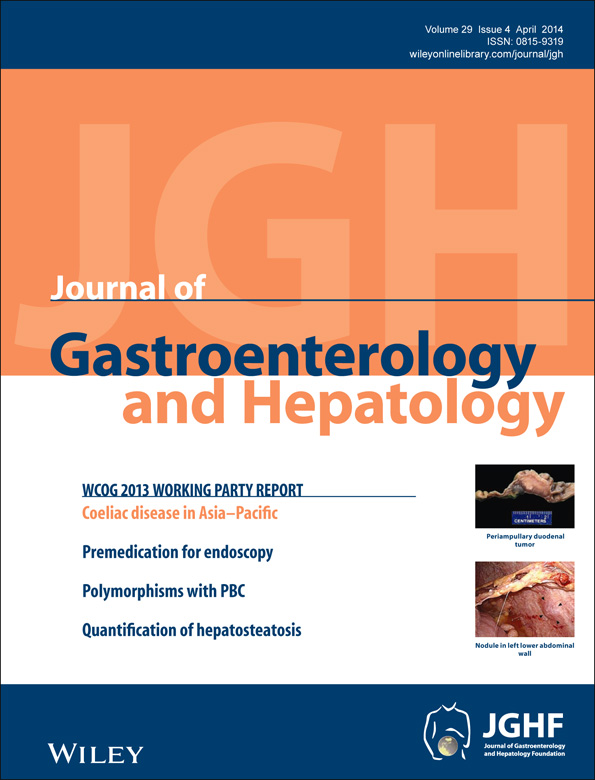Assessment of liver fibrosis with elastography point quantification technique in chronic hepatitis B virus patients: A comparison with liver pathological results
Abstract
Background and Aim
Elastography point quantification (ElastPQ) was a newly non-invasive method for the assessment of liver fibrosis by measuring liver stiffness. We aimed at evaluating the reproducibility of ElastPQ technology in the determination of liver stiffness and to investigate the value of ElastPQ in liver fibrosis staging among chronic hepatitis B patients.
Methods
A total of 291 successive patients who underwent liver partial hepatectomy or biopsy were examined with the ElastPQ technology for the measurement of liver stiffness. Ten ElastPQ measurements were obtained in the right lobe of the liver through the seventh to the tenth intercostal space for every patient. The reproducibility of ElastPQ technology was analyzed with intraclass correlation (ICC) of reliability analysis. Comparing the median of 10 measurements of ElastPQ with liver fibrosis, necroinflammatory activity, and steatosis pathologically, as well as gender and age, potential factors affecting liver stiffness were explored by multiple linear regression analysis, and the performances of ElastPQ were evaluated with repeated measures anova and receiver operating characteristic (ROC) curve.
Results
The ICC of 10 measurements of liver stiffness with ElastPQ technique was 0.798, which indicated a good reproducibility. Liver fibrosis and necroinflammatory activity were positively correlated with ElastPQ (P = 0.00, 0.01 < 0.05) while other factors had no effect on ElastPQ. There was significant difference of ElastPQ between S1 (5.60 ± 2.55 kPa) and S2 (7.44 ± 3.43 kPa) (P = 0.01 < 0.05), and S3 (8.71 ± 3.14 kPa) and S4 (10.87 ± 5.25 kPa) (P = 0.01 < 0.05). The area under the ROC curve was 0.94 (6.99 kPa, the optimal cut-off value) for ElastPQ measured with ElastPQ between S0–1 and S2–3, 0.89 (9.00 kPa) for ElastPQ between S2–3 and S4.
Conclusion
ElastPQ is a valid and reproducible non-invasive technology in liver stiffness measurement among chronic hepatitis B patients. The stage of liver fibrosis and the grade of necroinflammatory activity are associated with values of ElastPQ while liver fibrosis is the dominating factor affecting liver stiffness measured by ElastPQ.




